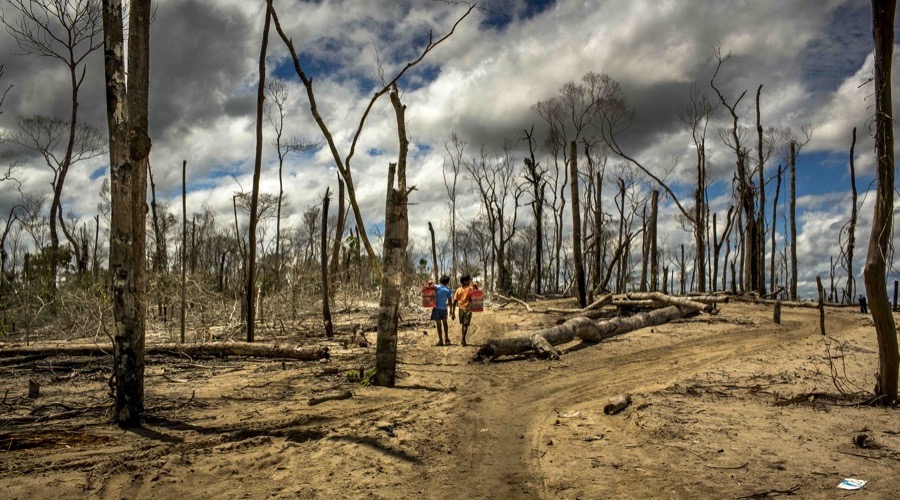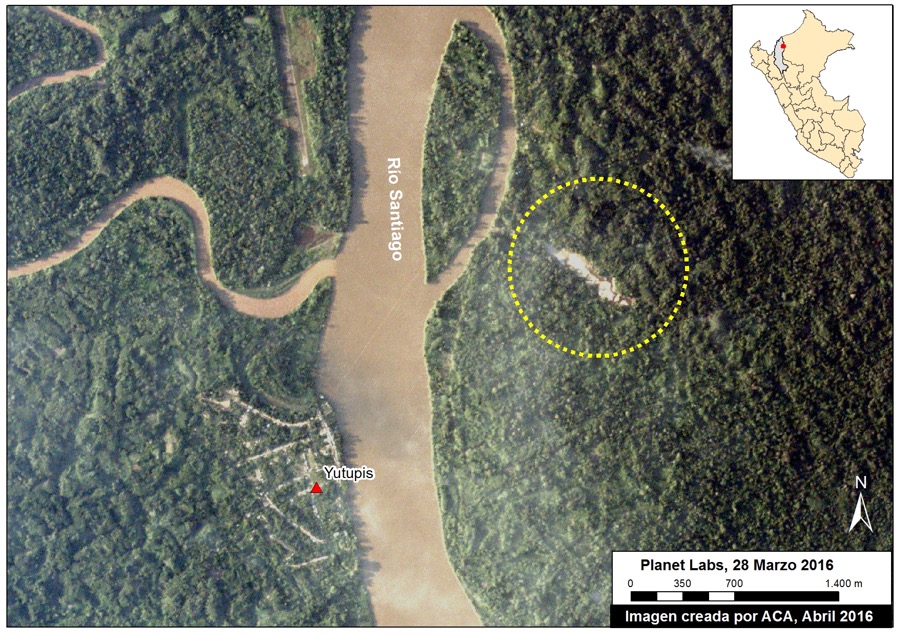
The Colombian Congress is discussing a bill that introduces the term “ecocide” to classify the effects of illegal mining and which would penalize such crimes with up to 12 years in prison or fines of up to 50,000 times the country’s minimum wage.
Penalties could go from fines equivalent to 50,000 times Colombia’s minimum wage to 12 years in prison.
The move is the government latest desperate attempt to put an end to an activity that is carving a toxic path through Colombia’s rainforest, local RCN Radio reported (in Spanish).
The South American nation has one of the highest rates of mercury contamination in the region. It is followed closely by Peru, where the government has been fighting for years against the effects of illegal mining.
Illegal miners use mercury to separate the gold from rock and then dump the chemical into water streams. They often handle the neurotoxin with their bare hands and inhale its fumes when it is burned off.
Last year, Colombia’s President Juan Manuel Santos unveiled a new plan to combat the problem. Among the fresh measures, Santos granted the Defense Ministry more powers to fight the country’s leftist rebel forces and criminal neo-paramilitary gangs, which are reportedly the ones behind the surge of illegal miners in the country.

As many as 50,000 people or 41% of the population of Peru’s gold-rich Madre de Dios region, bordering Brazil, has been exposed to mercury contamination in recent years. (Image from archives)
Additionally, Santos announced a new bill to be drafted in the coming days that will increase the penalties against the criminal activity.
Colombia has also began a formalization process, which implies helping unlicensed miners “come clean” by paying taxes and filing environmental impact statements, while the government guarantees training and safety.
Despite the government’s aims to formalize all miners by 2032, an investigative report financed with a grant from NACLA’s Samuel Chavkin Investigative Journalism Fund, shows that so far the program has been marked by extremely slow progress, chaos, and inconsistencies.
It is estimated that close to 80% of all the gold produced in Colombia comes from illegal miners.
The story, unfortunately, is nothing new. For years, illegal miners have been eating away the South America’s rainforests, while governments try to tighten the screws on illegal mining. However, the battle against illicit miners is far from over.
Until recently, no one really knew the full extent of the damage, but a research team from the Carnegie Institution for Science in Washington DC, and Peru’s Ministry of the Environment released in 2013 the first set of satellite images mapping the destruction.
The study showed the illicit activity had already destroyed almost 20,000 hectares of the Amazon rainforest. At that is only in Peru.
To make thing worse, satellite images releases last month show destruction is spreading to a whole new area by the Santiago River, which is already equivalent in size to 12 soccer fields.

High-resolution image of the newly deforested area due to mining activity along the Santiago River (see yellow circle). The total forest loss to date is 8 hectares (20 acres). (Images courtesy of MAAP.org —Monitoring the Andean Amazon Project | Satellite images: ©DigitalGlobe 2016)
Despite the government’s efforts to tighten the screws on illegal mining, it is estimated that close to 80% of all the gold produced in Colombia comes from illegal miners.
Colombia holds vast, and mostly untapped, reserves of coal, gold, silver and oil.